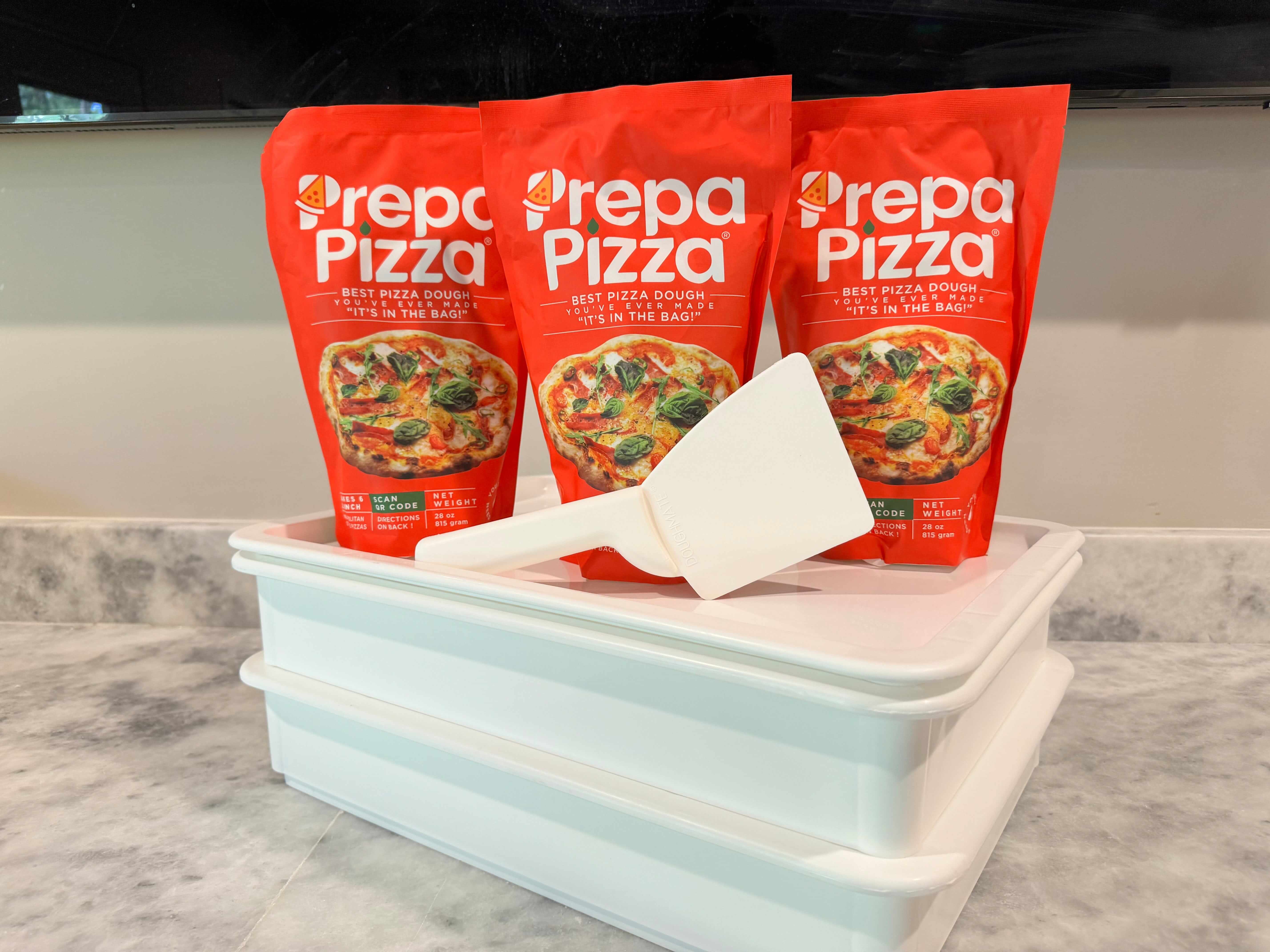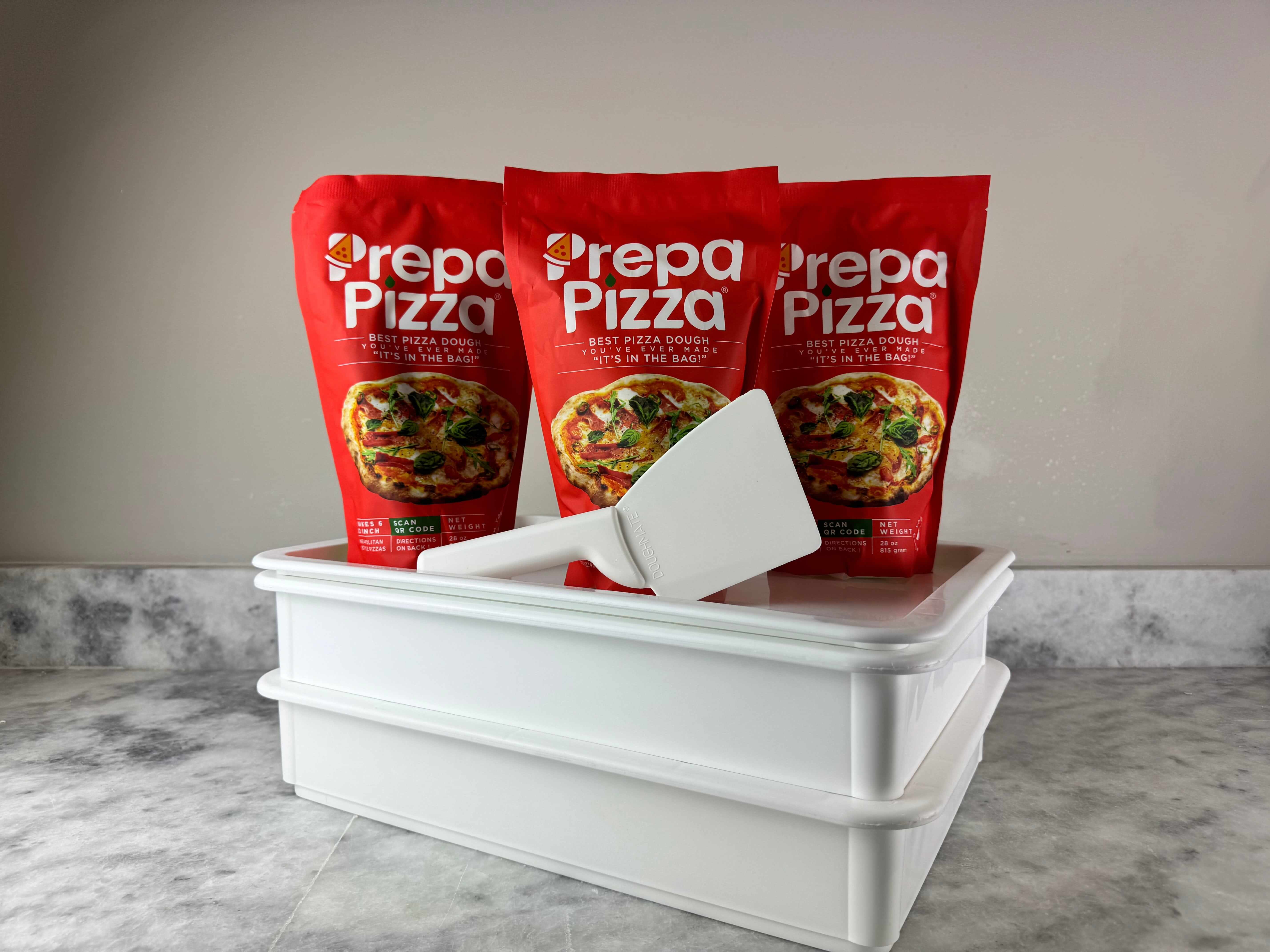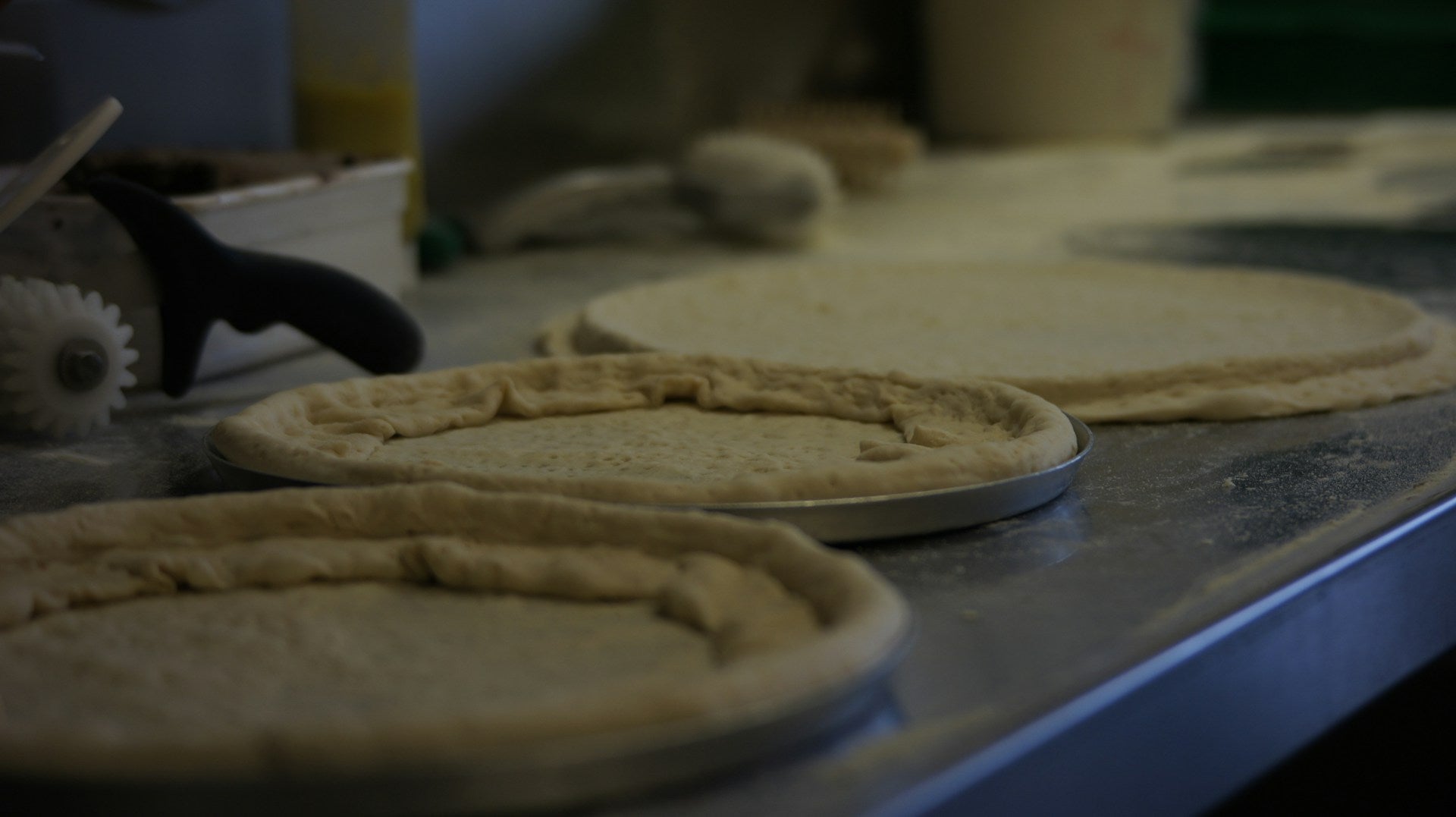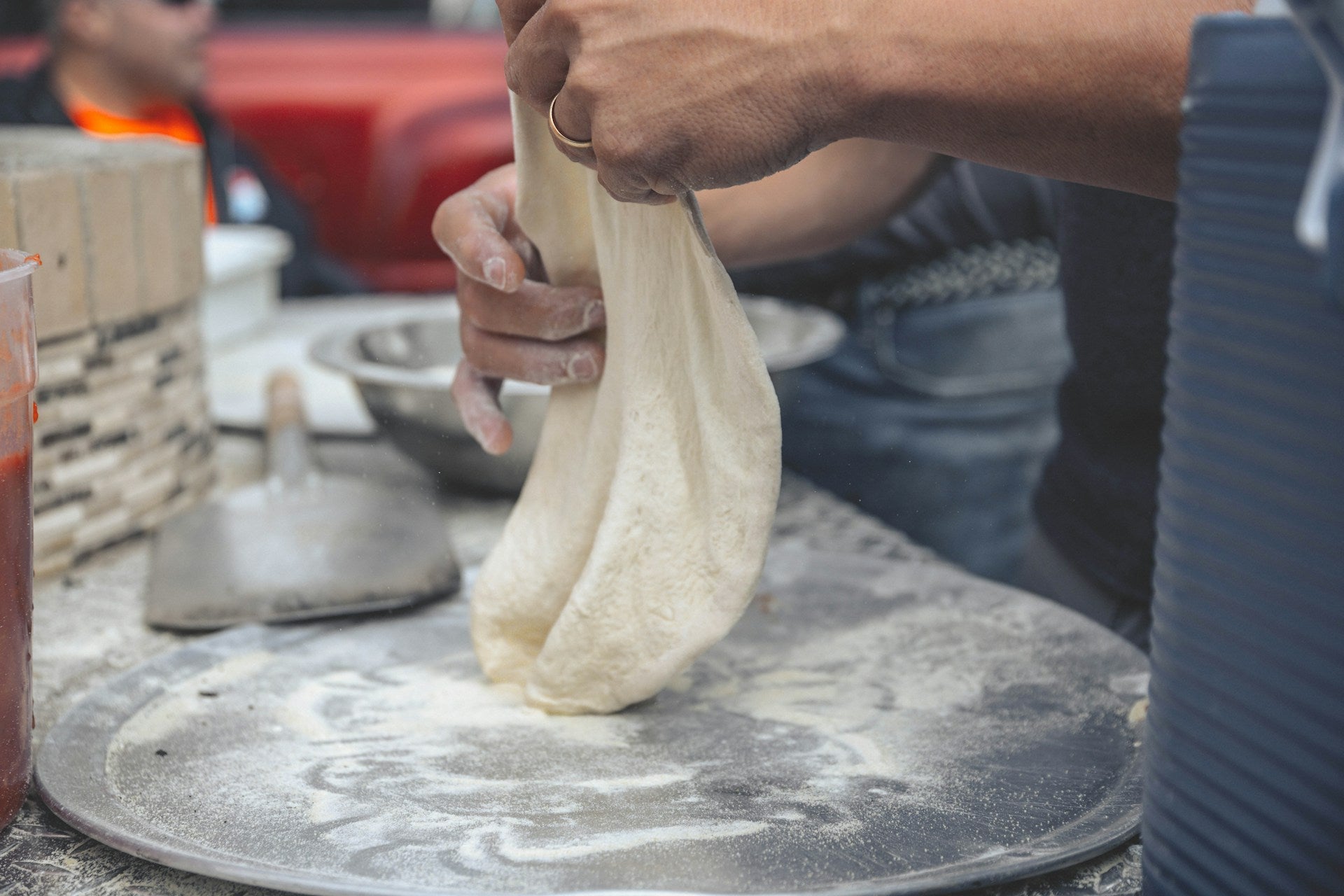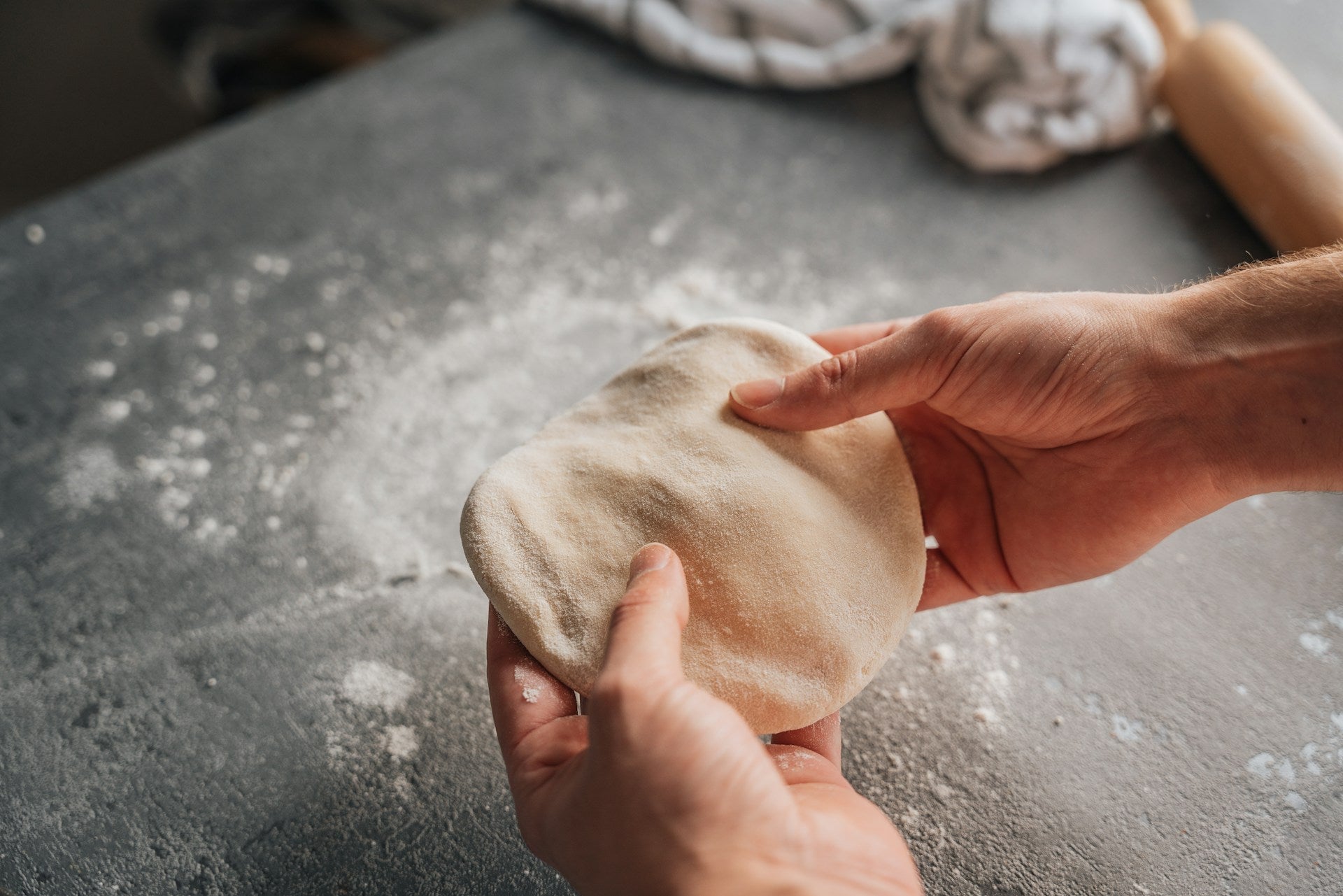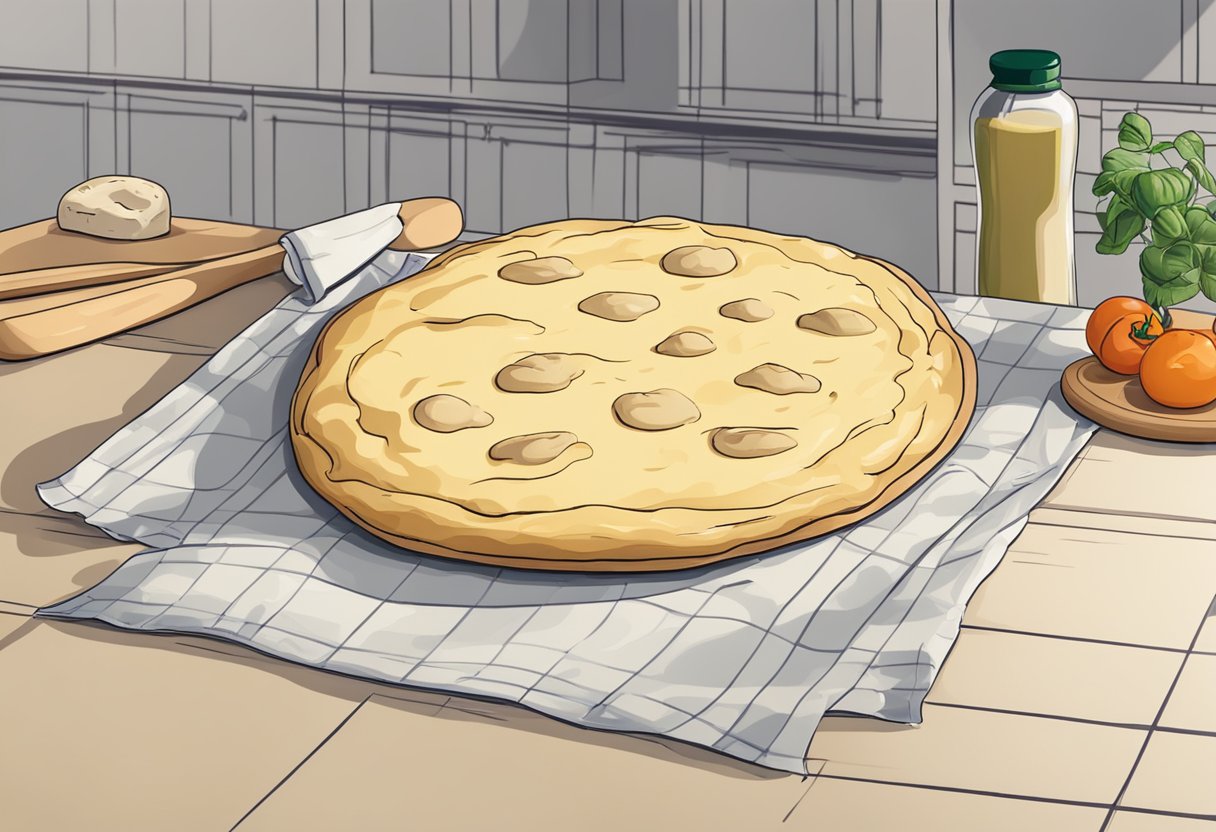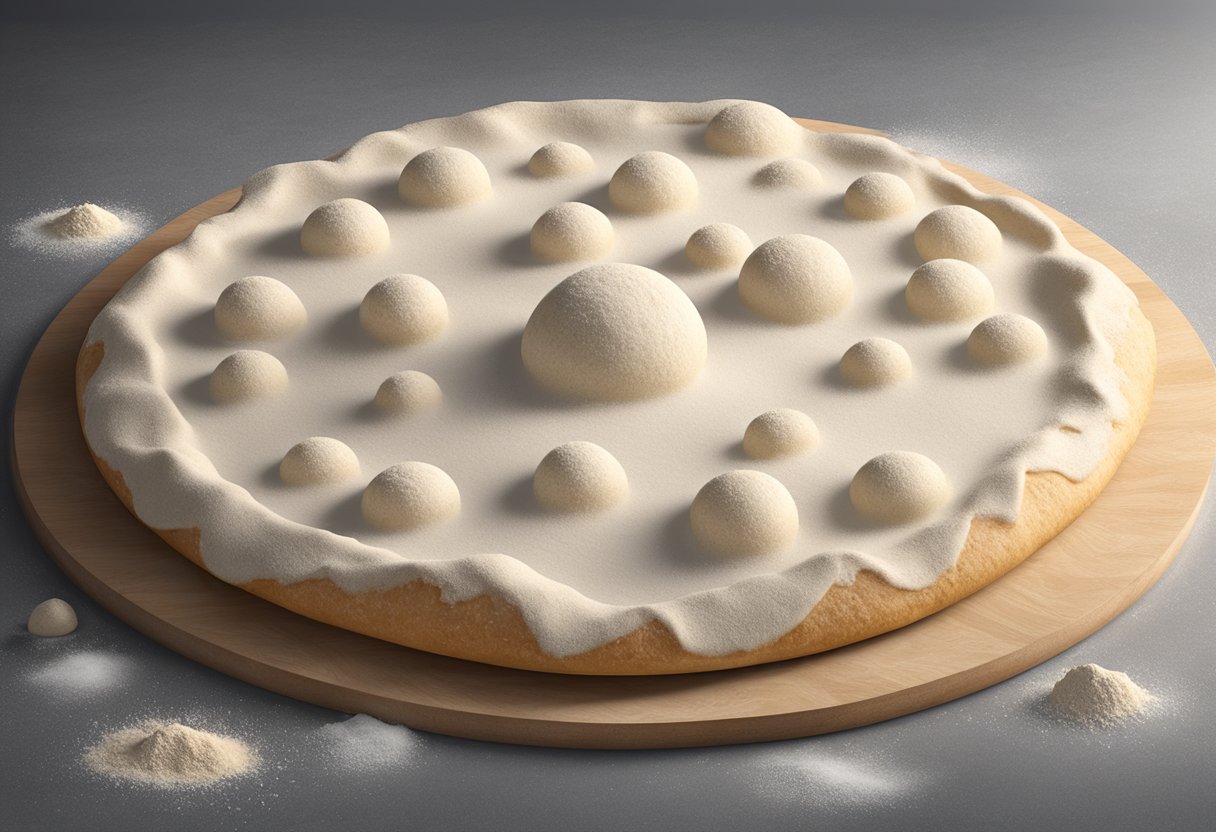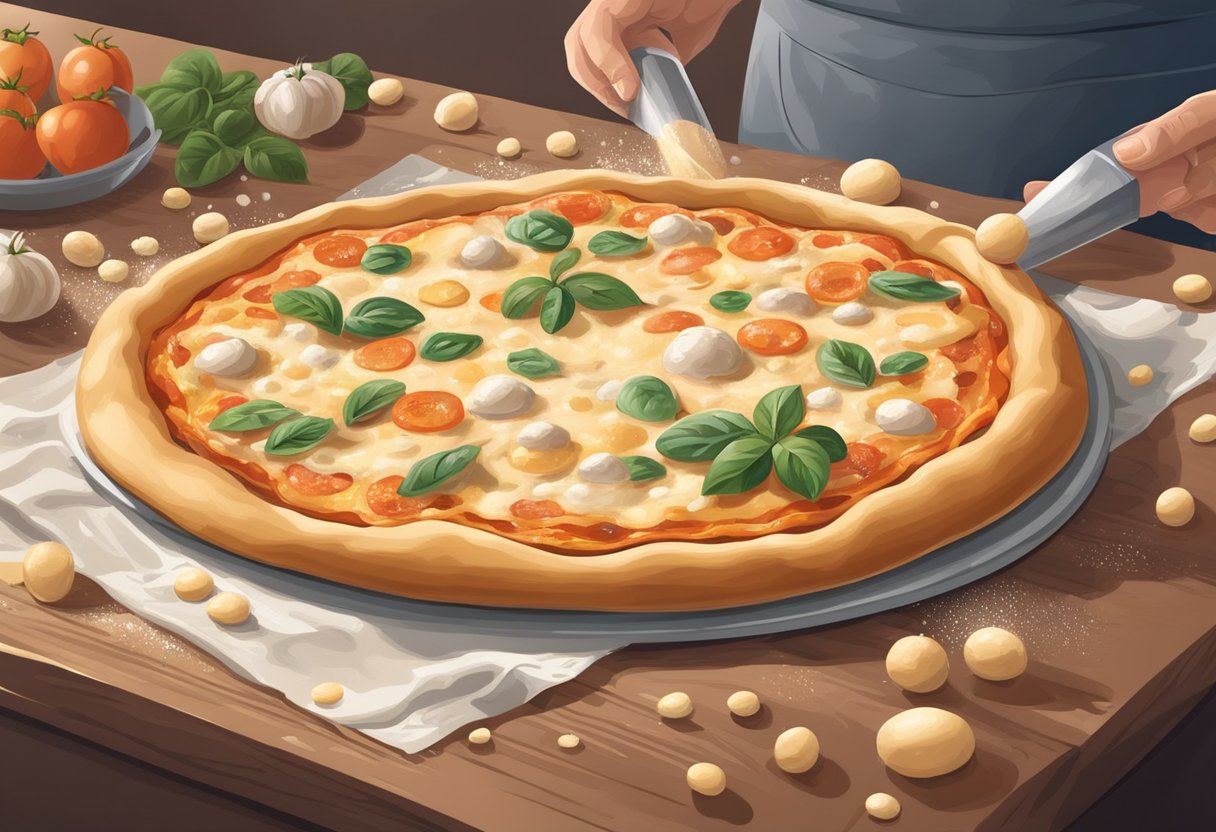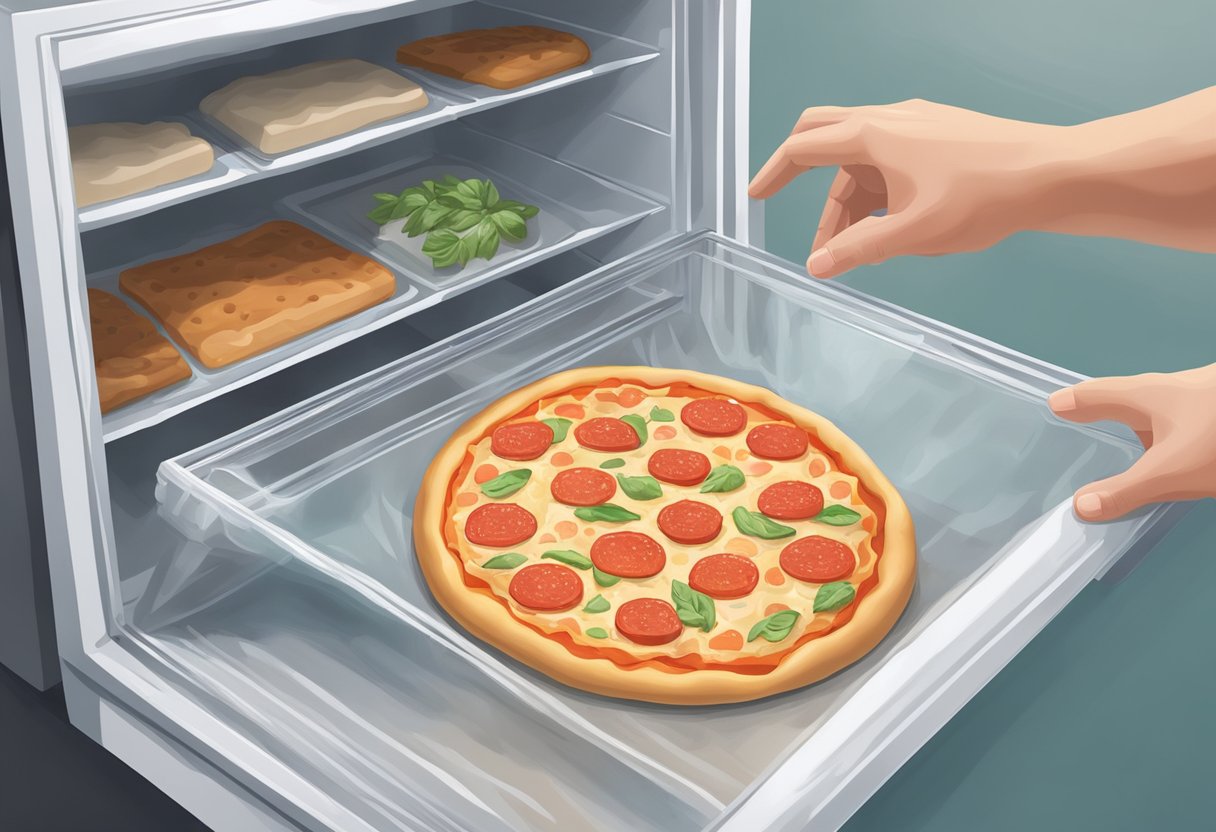
How Long to Take Pizza Dough Out of Fridge for Optimal Results
When it comes to making the perfect pizza, the way you handle your dough is crucial. For the best results, take your pizza dough out of the fridge and let it rest for at least 2 hours before shaping it into crusts. This resting period allows the dough to reach room temperature and increases its elasticity, making it easier to work with and enhancing the final texture of your pizza.
If you're in a hurry, some experts suggest that even a brief rest of about 45 minutes can suffice, particularly for thinner crusts. However, for a well-developed flavor and optimal rise, giving your dough ample time to rest will yield superior results. Whether you’re crafting a classic Neapolitan pizza or a thicker, heartier pie, proper handling of your dough is essential to achieve that restaurant-quality result you’re aiming for.
Using Prepa Pizza dough guarantees a premium base for your creations, made from quality ingredients. By allowing it to rest properly, you're setting yourself up for pizza success. Get ready to impress with a delicious, homemade pizza!
Understanding Pizza Dough
Creating the perfect pizza starts with a solid understanding of pizza dough. Key components such as yeast and gluten work together to produce a dough that's flavorful and easy to work with. Choosing the right flour is equally essential for achieving the desired texture and taste.
The Role of Yeast and Gluten
Yeast is a crucial ingredient in pizza dough production. It ferments sugars, producing carbon dioxide that causes the dough to rise. This process creates air pockets, resulting in a light and airy crust. For optimal results, you're looking for active dry yeast, which should be mixed with warm water before combining with other ingredients.
Gluten, on the other hand, is formed when flour is mixed with water. It provides elasticity, helping the dough stretch without tearing. When you knead the dough, you're developing the gluten structure. A strong gluten network allows your dough to hold shape and trap gases during fermentation.
Adding ingredients like salt enhances flavor and controls yeast activity. A dash of olive oil can improve dough extensibility, making it easier to stretch. For best results, consider a pizza dough recipe where bread flour is used, as it has a higher protein content, resulting in chewier crusts.
Choosing the Right Flour
The type of flour you select is vital to the dough's final texture and taste. Bread flour is often recommended due to its high protein content, which supports gluten formation and leads to a chewy crust. If you're after a crispier texture, consider a blend of bread flour with all-purpose flour.
Always evaluate your recipe's specific needs. For standard pizza, aim for a protein content of around 12-14%. This balance will give your dough the right structure without making it too dense.
When preparing the dough, mix the flour with warm water and yeast. It’s essential to let the dough rest for the recommended time to develop flavor and texture. The ideal dough consistency is slightly tacky but not overly sticky, allowing you to work with it easily.
Incorporating the right ingredients, like quality salt and olive oil, with the correct type of flour will enhance your pizza-making experience. At Prepa Pizza, we ensure our premade dough is made with premium ingredients, providing you with a restaurant-quality product for your next pizza night.
Preparing Your Dough
Getting your pizza dough ready is crucial for achieving the perfect crust. Focus on the right mixing and kneading techniques, followed by appropriate resting and rising times to enhance flavor and texture.
Mixing and Kneading Techniques
When preparing your dough, start by mixing flour with salt and a combination of active dry yeast or instant dry yeast. For extra strength, consider incorporating vital wheat gluten. Combine these dry ingredients thoroughly before adding water and a splash of olive oil, which helps with elasticity.
Kneading is vital for developing gluten, giving your dough the right structure. You should knead your dough for about 8-10 minutes until it becomes smooth and elastic. If you're using a sourdough starter, mix it in during this stage for added flavor and complexity. Ensure you keep the dough surface lightly oiled to prevent sticking during this process.
Resting and Rising Times
After kneading, it’s essential to let the dough rest and rise properly. First, shape the dough into a ball and place it in a lightly oiled bowl. Cover it with a damp cloth or plastic wrap. Depending on the yeast type and room temperature, this rising period can range from 1 to 2 hours.
If you prefer a more flavorful dough, refrigerate it. Allow it to rest in the fridge for about 24 hours, then take it out to come to room temperature for at least 30 minutes before stretching. This slower fermentation improves taste and texture, making your pizza truly exceptional.
Bringing Dough to Temperature
To achieve the best texture and flavor in your pizza, you need to bring your dough to room temperature before using it. This process helps relax the gluten and makes the dough easier to stretch and shape. Here’s how to do it effectively.
Removing Dough from the Fridge
When you're ready to use your refrigerated Prepa Pizza dough, take it out of the fridge. Ideally, you should have let it rest in the fridge overnight for optimal fermentation. This allows for better flavor development.
Next, unpackage the dough gently to avoid tearing. Place it on a floured surface to prevent sticking. Depending on the room temperature, let the dough sit for at least 1 to 2 hours. If your kitchen is cooler, it may need a bit more time. It's crucial to ensure that the dough reaches an even temperature throughout, which directly affects how well it can be shaped.
Warming Up Steps
To warm the dough properly, start by re-balling it after removing it from the fridge. This step helps redistribute the yeast and creates a more uniform temperature.
Cover the dough with a clean kitchen towel or plastic wrap. This keeps the surface from drying out. Check the dough periodically; it should feel soft and slightly warm to the touch after about an hour.
If you're in a hurry, you can speed up the process slightly by placing the dough in a warm (not hot) environment. Avoid direct heat sources, as they can affect the yeast's effectiveness. Following these steps will ensure your Prepa Pizza dough is ready for shaping and baking, resulting in a perfect pizza crust.
Shaping and Preparing the Crust
Getting the pizza dough ready for baking involves key steps that ensure your crust is shaped perfectly and full of flavor. Pay attention to the texture and environment to make the most out of your dough.
The Shaping Process
Start by lightly oiling the dough to prevent sticking. After removing your Prepa Pizza dough from the fridge, let it rest for about 30 minutes to allow the gluten to relax. This makes shaping easier.
On a floured surface, gently press the dough into a disc with your hands. Gradually, use your fingers to stretch and shape the disc into your desired size. If you prefer a thicker crust, keep the edges a bit thicker. Avoid using a rolling pin, as this can deflate the dough.
For an authentic touch, sprinkle a bit of cornmeal on your pizza stone or baking sheet. This prevents sticking and adds texture. Once shaped, transfer your pizza base onto a pizza peel if you're using a stone. Always keep your oven hot for the perfect bake.
Creating a Flavourful Crust
To enhance the flavor of your crust, consider incorporating seasonings. Dusting the edges with garlic powder, oregano, or even grated Parmesan before baking can elevate your pizza.
Additionally, let the dough rest at room temperature after shaping. This final rise lets the yeast work a bit longer, improving the overall texture and taste. Always aim to bake your pizza in a preheated oven at a high temperature for short durations, ensuring you achieve a crispy bottom and nicely risen edges.
By following these steps, your Prepa Pizza dough will become a delicious crust that sets the stage for your favorite toppings.
Toppings and Baking
When preparing your homemade pizza, selecting the right toppings is essential for flavor and texture. Additionally, knowing how to bake your pizza effectively ensures a perfectly cooked crust and melted cheese.
Choosing Toppings
The first step in topping your pizza is to consider balance. Utilize a mix of fresh vegetables, meats, and cheeses. Here are some popular choices:
- Cheeses: Mozzarella is the classic choice for its meltability. Consider adding Parmesan or Gouda for depth.
- Meats: Pepperoni, sausage, or grilled chicken provide protein and heartiness.
- Vegetables: Fresh toppings like bell peppers, onions, and mushrooms add freshness and color.
For a flavorful base, choose a quality pizza sauce that complements your toppings. A homemade sauce can elevate your pizza significantly and is often preferable over store-bought varieties. Spread the sauce evenly, leaving a small border for your crust.
Baking Your Pizza
Once you have your toppings in place, it’s time to bake. Preheat your hot oven to the highest setting, typically around 475°F to 500°F (245°C to 260°C). This ensures a crispy crust.
For large pizzas, use a pizza stone or baking sheet to maximize heat retention. Bake your pizza for 10-15 minutes, but check for doneness after 8 minutes. The cheese should be bubbly and the crust golden brown.
Let your pizza rest for a couple of minutes before slicing. This helps avoid a soggy bottom and makes serving easier. Enjoy the delicious results of your careful topping selection and perfect baking technique! Remember, with Prepa Pizza, you start with premium dough, ensuring a restaurant-quality pizza right at home.
Frequently Asked Questions
When working with pizza dough, understanding resting times and proper handling is crucial for achieving the best results. Here are some common questions related to taking pizza dough out of the fridge and how to prepare it for baking.
How long should pizza dough rest at room temperature before baking?
You should allow your pizza dough to rest at room temperature for about 1 to 2 hours before baking. This period helps the dough become more pliable and easier to stretch.
What is the ideal time to proof pizza dough at room temperature?
The ideal time to proof pizza dough at room temperature is typically around 1 to 3 hours. This will depend on the dough’s specific ingredients and your kitchen temperature.
How long does it take for refrigerated pizza dough to reach room temperature?
Refrigerated pizza dough generally takes about 30 minutes to 1 hour to reach room temperature. Factors such as the size of the dough ball and ambient temperature can influence this timing.
Is there a required wait time after removing pizza dough from the fridge before using it?
Yes, you should wait approximately 30 minutes after removing the pizza dough from the fridge before using it. This allows the dough to relax, making it easier to work with.
What happens if I forget to take pizza dough out of the fridge in advance?
If you forget to take pizza dough out in advance, you can still use it directly from the fridge. Just be prepared to stretch it a bit more, as it may be stiffer and less pliable.
When is the best time to remove pizza dough from the fridge prior to cooking?
The best time to remove pizza dough from the fridge is about 30 minutes to 1 hour before you plan to cook. This ensures the dough is at an optimal temperature for shaping and baking.




